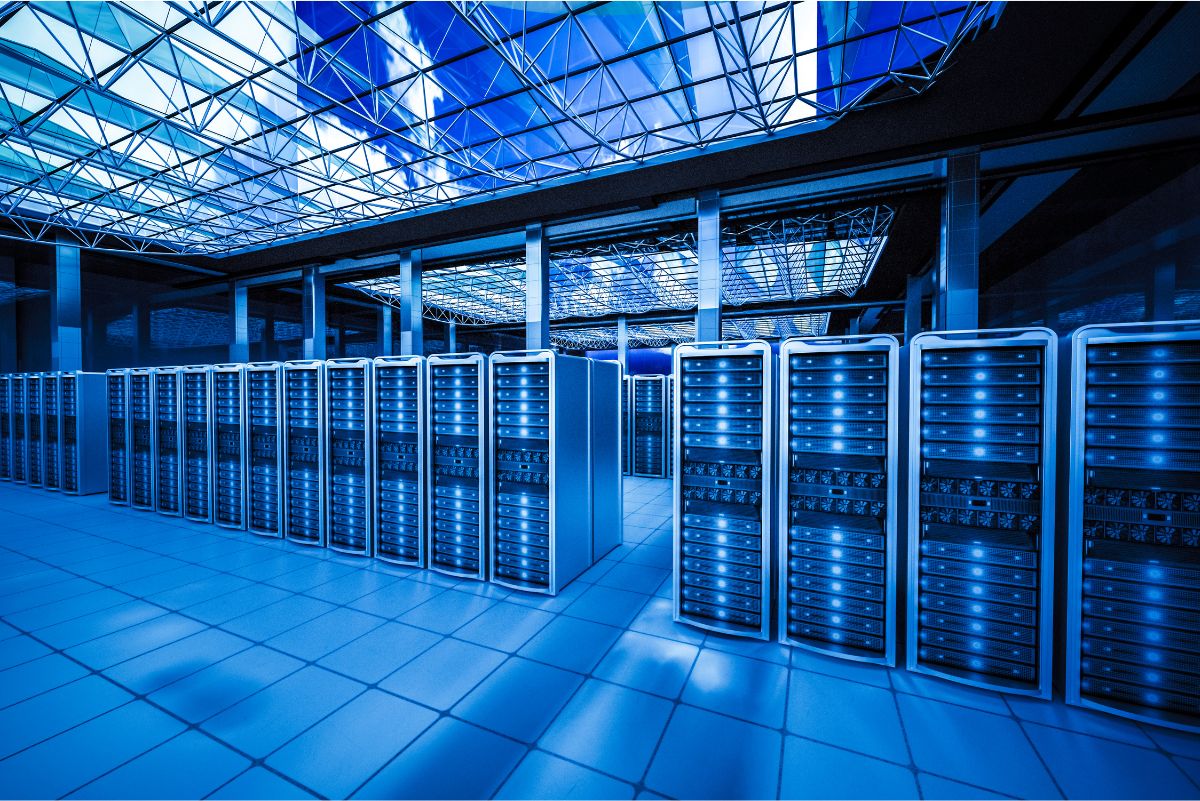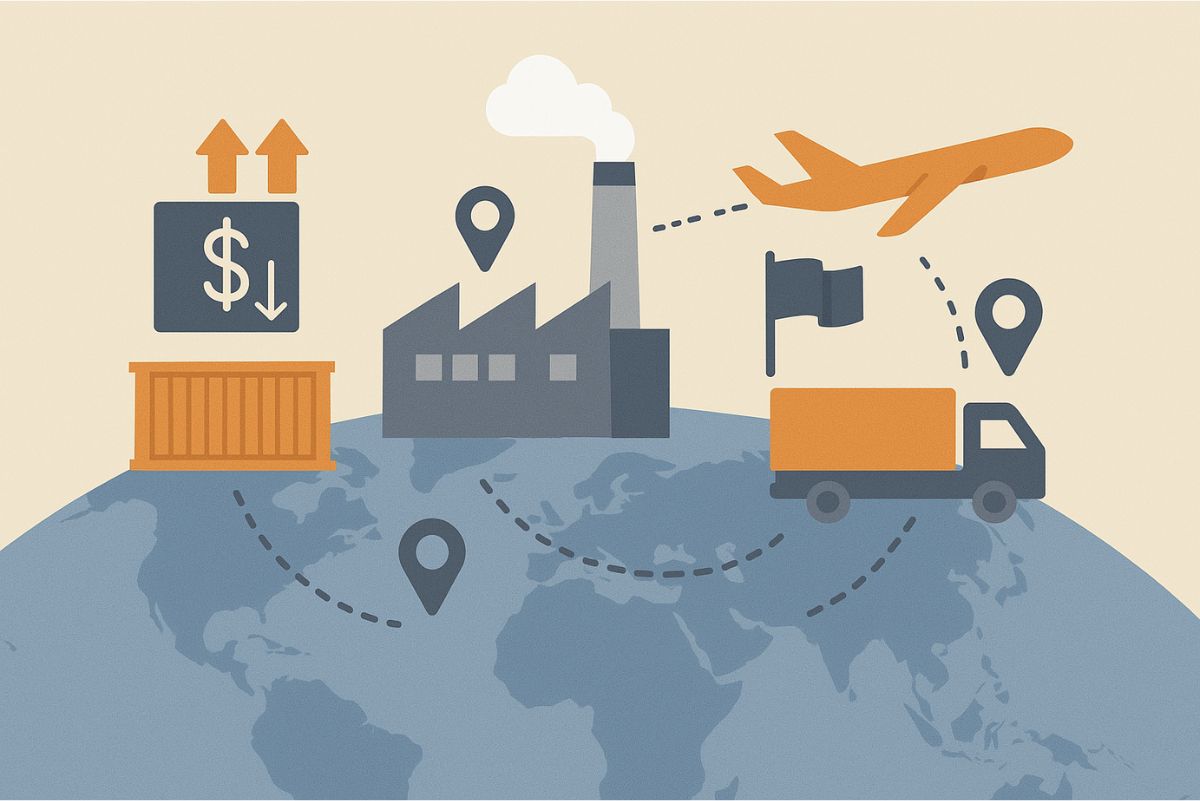Breaking Bottlenecks: Overcoming Supply Chain Challenges in Data Centers
Introduction: The proliferation of data centers
Data centers have become the backbone of our interconnected world, supporting everything from cloud computing to artificial intelligence (AI) applications. The demand for rapid data processing and storage has led to the emergence of hyperscale data centers—massive facilities designed to efficiently scale in response to escalating data needs. These centers are pivotal in driving technological innovation and economic growth.
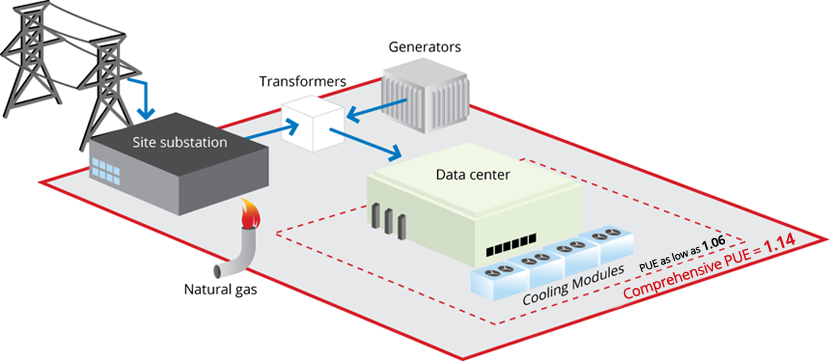
Major operational challenges for data centers
Despite their critical role, data centers face significant operational challenges that can impede their growth and efficiency. Key among these are:
1. Supply chain constraints
The expansion of data centers is heavily reliant on a robust and agile supply chain. However, recent reports indicate that supply chain issues are limiting revenue growth among major U.S. data center developers. Constraints in the availability of semiconductor chips, essential for data center scalability and processing power, have been particularly impactful. The manufacturing of these chips is highly concentrated, with a few companies dominating the market, leading to vulnerabilities in the supply chain.
Additionally, the geopolitical landscape has shifted towards more nationalistic production models, further complicating global supply chains. The U.S. government’s CHIPS and Science Act of 2022 aims to bolster domestic semiconductor production, but new fabrication plants are not expected to be fully operational until 2028 or 2029, leaving a gap in the interim.
This chart highlights how fluctuating energy prices affect data center operational expenses. It demonstrates the financial burden of high electricity consumption in the U.S, particularly as AI-driven workloads demand more power. The insights emphasize the growing need for energy-efficient infrastructure and alternative power sources to mitigate cost volatility.
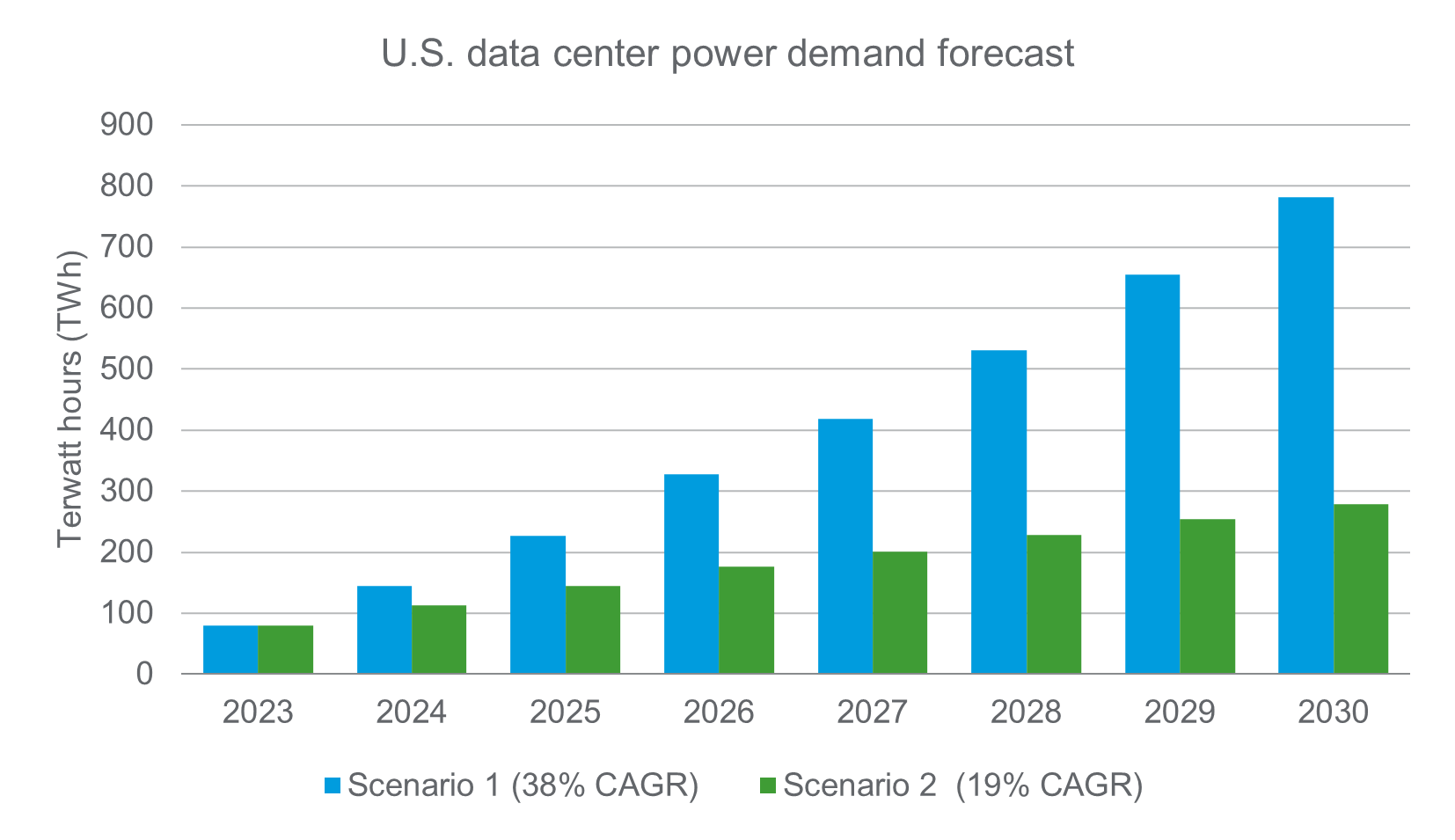
2. Energy consumption and sustainability
Data centers are notorious for their substantial energy consumption. Gartner predicts that by 2027, power shortages will restrict 40% of AI data centers worldwide. The increasing power densities required by advanced AI chipsets exacerbate this issue, demanding more energy than traditional data centers.
Securing sufficient electricity has become a pressing concern, with some regions projecting potential capacity shortages as early as 2026. Alternative energy sources like solar and wind are being explored, but their reliability without significant battery expansion remains challenging. New nuclear plants offer a potential solution, but their long construction timelines make them a less immediate fix.

This chart projects the rising power consumption of AI-driven data centers over five years. The trend highlights the significant increase in electricity demand due to high-performance AI workloads. With Gartner predicting that power shortages will restrict 40% of AI data centers by 2027, this visualization underscores the urgency of securing sustainable and scalable energy sources.
In addition to energy concerns, there is a growing emphasis on sustainability. Data centers are under pressure to reduce their environmental footprint by adopting eco-friendly practices. Strategies include optimizing cooling systems, utilizing renewable energy sources, and implementing energy-efficient hardware. These measures not only address environmental concerns but also help in managing operational costs associated with high energy consumption.
3. Real estate and infrastructure
The physical expansion of data centers requires significant real estate and infrastructure investments. However, securing suitable land is becoming increasingly challenging due to urbanization and competition for space.
Moreover, the construction of new facilities is often hampered by supply chain bottlenecks affecting the availability of critical components and materials. These delays can lead to extended project timelines and increased costs, impacting the ability of data centers to scale rapidly in response to demand.
The more power one can fit into a smaller real estate footprint, the less expensive real estate costs are relative to the revenue generated. For instance, modular data centers can reduce the footprint and cost of containerized electrical rooms by using smaller, more power-dense equipment.
Framework for best-in-class supply-chain capabilities
According to Kearney, a company needs to enable the supply-chain planning capabilities from three crucial dimensions—people, process, and technology to ensure a successful data-center buildout (see figure 2).
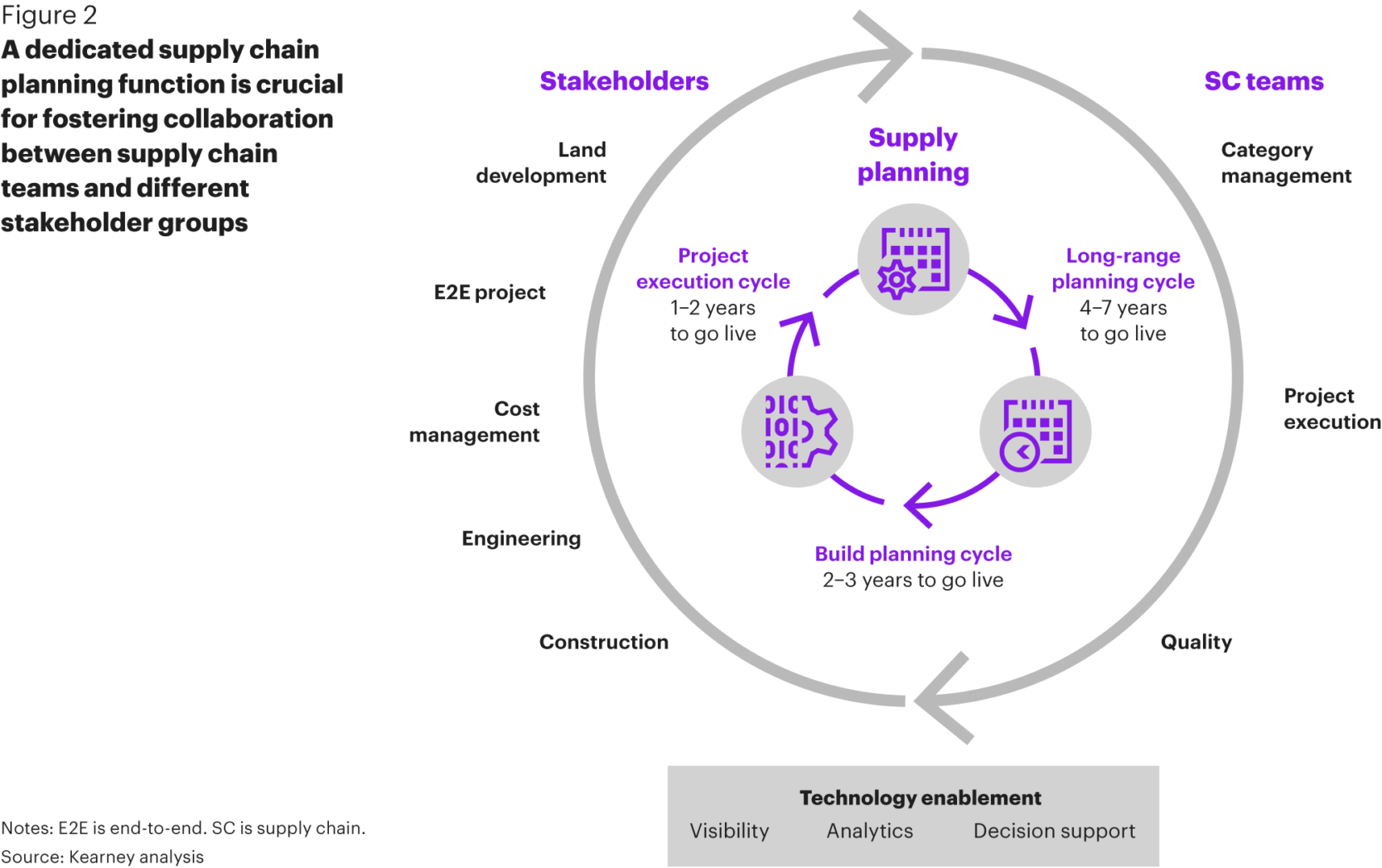
A dedicated supply chain planning function ensures seamless collaboration between internal and external stakeholders, with experienced planners playing a critical role in managing large-scale projects. The planning process operates in three interconnected cycles—long-range planning, which focuses on supplier readiness and demand forecasting; build-planning, where sourcing strategies and project schedules are finalized; and project-execution, where risk mitigation and real-time problem-solving ensure timely delivery. Technology is vital in streamlining these processes.
Leveraging supply chain design and optimization technology
To navigate these challenges, data center companies can turn to advanced supply chain design and optimization software. These tools offer several benefits:
- Enhanced Visibility and Planning: Leading supply chain design software provides comprehensive analytics for logistics network design, inventory, and production capacity planning. By offering end-to-end visibility, these tools enable data center operators to anticipate disruptions and adjust strategies proactively.
- Scenario Modeling and Risk Mitigation: Supply chain design and planning tools enable businesses to run multiple “what-if” scenarios. That helps in evaluating the impact of various factors—like component shortages or energy constraints—on operations, facilitating informed decision-making to mitigate risks.
- Sustainability Integration: Modern supply chain tools incorporate features to balance cost, service, and carbon emissions. This enables companies to model emissions extensively, ensuring compliance with sustainability standards while maintaining operational efficiency. SC Navigator goes the extra mile by enabling supply chain leaders to do multi-objective scenario modelling.
- Agility in Response to Disruptions: The dynamic nature of global supply chains necessitates agility. Leading solutions leverage machine learning to automate planning and accelerate decision-making, allowing data center companies to adapt swiftly to changing conditions and maintain continuity.
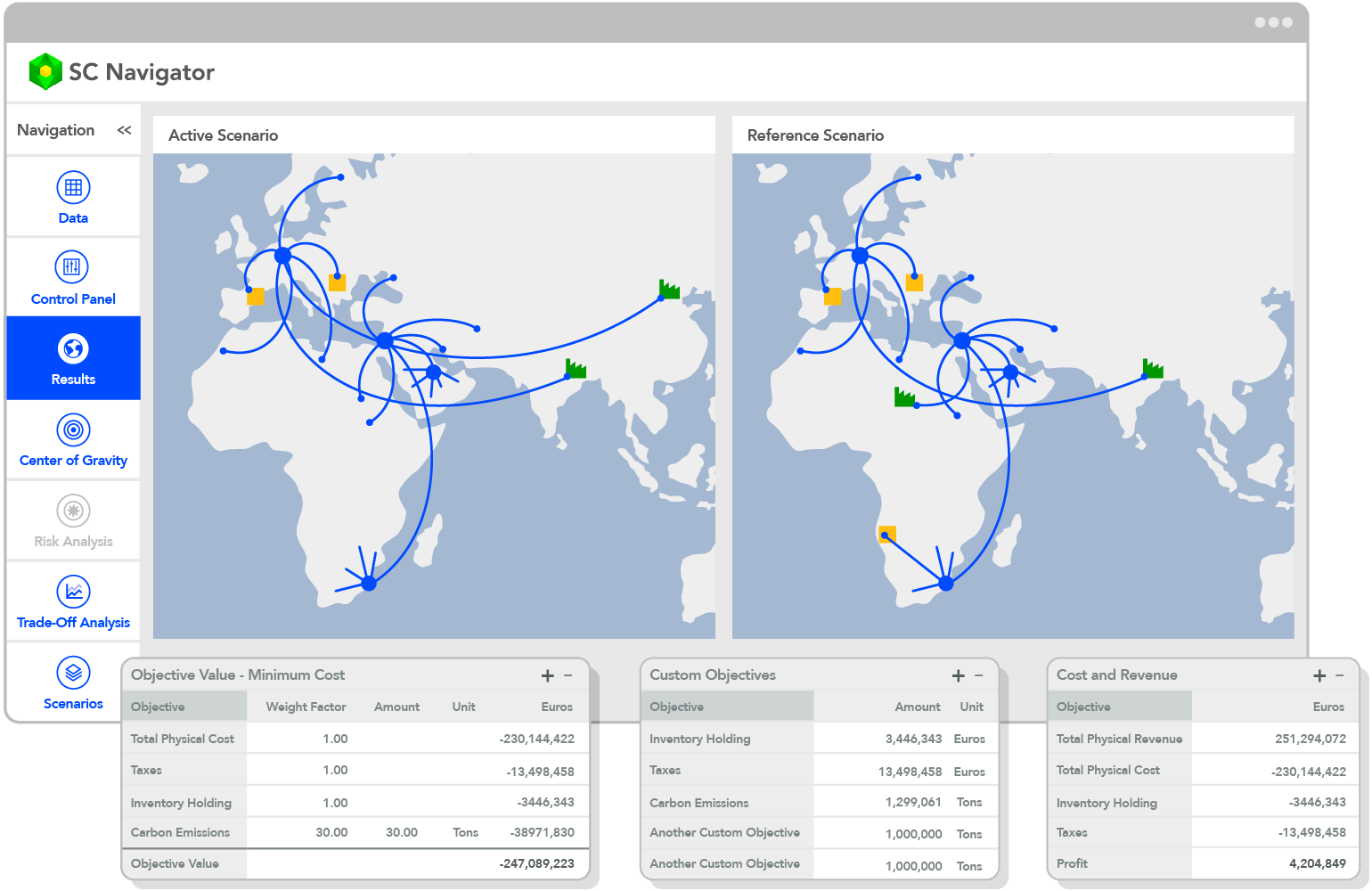
See how our customer Cushman & Wakefield optimizes the supply chain for their clients using SC Navigator.
Conclusion
As of mid-2024, the data center supply chain has shown signs of improvement compared to the severe disruptions experienced in previous years. Semiconductor shortages have largely abated, reducing lead times for acquiring new servers and equipment. Energy prices have stabilized, and delays in obtaining building materials have lessened, facilitating more timely construction of data centers.
However, challenges persist. The demand for AI-optimized chips has surged, leading to potential shortages that could impact data centers focusing on AI workloads. Construction costs remain elevated due to high material prices and interest rates, affecting the financial feasibility of new projects. Despite these hurdles, the industry continues to expand, driven by the increasing need for data processing and storage solutions.
In this evolving landscape, supply chain design and optimization play a crucial role in enhancing resilience and efficiency. By providing comprehensive analytics, scenario modeling, and sustainability integration, these tools enable data center operators to navigate complexities, anticipate disruptions, and make informed decisions. Embracing leading tools and best practices are essential for maintaining operational continuity and meeting the growing demands of the digital age.
Ready to find out how to optimize your supply chain for your data center company? Talk to our experts today!

